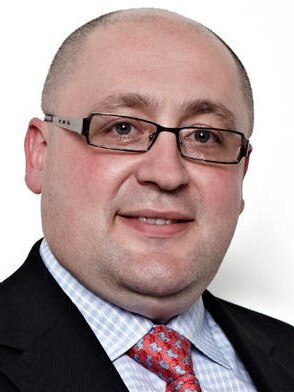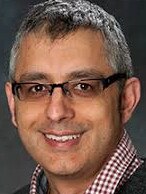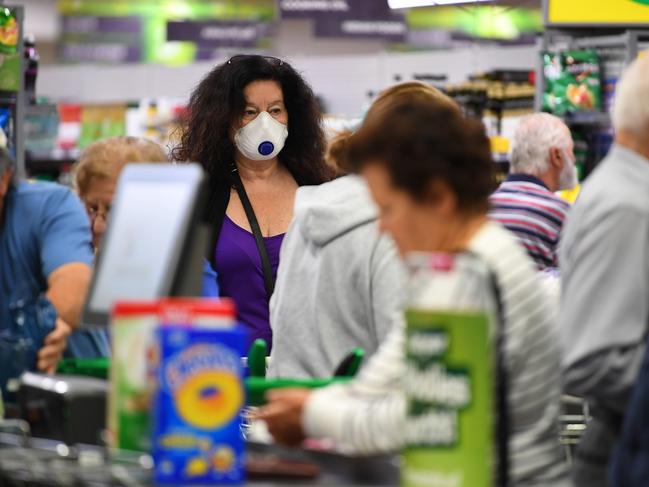Coronavirus updates: Make masks mandatory in Australia, say experts
A Melbourne-based expert says the use of face masks in public should be mandatory - and an overwhelming majority of readers seem to agree.
Coronavirus
Don't miss out on the headlines from Coronavirus. Followed categories will be added to My News.
Conflicting and confusing messages have hindered the take-up of face masks in Australia, health experts believe, leading to calls for them to be made mandatory in Victoria immediately.
Australian attitudes toward face masks have changed since the early days of the coronavirus outbreak, when just five per cent of Australians said they had donned a face covering in public.
ABS surveys have shown that mask usage in Australia has been as high as 17 per cent, but new data released today, covering the period June 25-29, revealed just 13 per cent of respondents said they had worn a mask in the seven days prior.
Dr Alex Polyakov a Senior Lecturer at the University of Melbourne, who holds masters degrees in epidemiology, biostatistics, and health law, told News Corp that masks should be made mandatory in public in Victoria right now.
“This intervention is so cheap it should be universally implemented,” he said. “If you go out to a supermarket you should be required to wear a mask. If you work in a situation where social distancing is problematic, you once again should be required to wear a mask.
“There is clear evidence on a population level that near universal wearing of masks makes a difference.”
Dr Polyakov said that if 80 per cent of the population wore masks consistently, “it would be more beneficial than a strict lockdown”.
Readers seemed to concur. As at 5pm AET on Monday, more than two in three respondents (68 per cent) to an online poll said masks should be mandatory in areas with high infection, while just one in four respodents (25 per cent) they should not be. Seven per cent of respondents were undecided on the issue.
Dr Polyakov said some states in the US had mandated mask-wearing and some had not, and the states that had made them mandatory now had lower case numbers and lower fatalities.
But Hassan Vally, Associate Professor in Epidemiology at La Trobe University, told News Corp that enforcement was problematic.
“When you make something mandatory that increases the level of complexity in terms of implementing it as a public health measure.,” he said. “What if someone needs to hop on a tram and the tram’s empty, and they don’t have a mask on them. Do you stop them getting on the tram or do you arrest them if they do? I think our philosophy always has to be as a first line to encourage and educate people and work with people to get the right outcomes rather than jumping to enforcement and making things mandatory.”


Both Dr Polyakov and Assoc Prof Vally said from their observations, the rate of mask wearing in Melbourne had increased since last Friday, when Victorian Premier Daniel Andrews encouraged people to cover their faces in public if they could not be socially distant.
Assoc Prof Vally said there had been supply concerns that led experts to actively discourage general members of the public from using masks in the early days of the outbreak, but those issues were now resolved.
“That’s all completely changed now. There are more than enough masks to go around,” he said.
A spokesperson for the Department of Health said the evidence on masks was under constant review, but the advice remained consistent: they were not generally recommended.
“People in a region where community transmission is occurring, such as around Melbourne, should take extra precautions in circumstances where physical distancing is difficult to maintain, such as when travelling on public transport,” the official said.
Federal Health Minister Greg Hunt said today he was sending five million masks from the national stockpile for use in Victoria: one million for primary health and four million for aged care and home care workers.
When asked when people in other cities such as Sydney should be encouraged to wear masks, Assoc Prof Vally said it was a matter of “monitoring the trend” and switching to a mask message “as soon as you see an upswing”.
Professor Raina MacIntyre, Head of the Biosecurity Program at the Kirby Institute at the University of NSW, said the wearing of masks should not be mandatory, but should be encouraged as much as possible.

“People are often influenced by peer pressure – the more people that wear masks, the less stigmatisation there will be about wearing masks,” she said. “We saw a complete switch in the culture of mask-wearing in hard-hit cities like New York and Bergamo. We could achieve that here too, with the right messaging and support for the community.”
An Italian study also found that people tend to stand further apart from people wearing masks, she said, which was a “good additional effect”, she said.
Dr Abrar Chughtai, a lecturer and the director of the Master of Infectious Diseases Intelligence (MIDI) program in the School of Public Health and Community Medicine said masks should be mandatory in Melbourne, particularly in areas with high transmission and in crowded public places.
“The main issue is the high proportion of asymptomatic cases of COVID-19. So we don’t know who is healthy and who is sick, so everyone should use mask in high transmission zones,” he said.
US President Donald Trump was photographed wearing a mask in public for the first time during a visit to a military hospital over the weekend, after previously saying he would not.
Australian Prime Minister Scott Morrison has not been photographed wearing a mask since the coronavirus outbreak, although his press conferences have all observed social distancing.
When pressed on whether Mr Morrison had worn a mask during the outbreak, and in what circumstances, a member of his office said the Prime Minister “follows the medical advice”.
TO WEAR OR NOT TO WEAR A MASK: A TIMELINE
March 9 Amid growing concern about supplies of Personal Protective Equipment, Australia’s then Chief Medical Officer Brendan Murphy says he is “very opposed” to people wearing masks in public, but said it made more sense for people who were travelling, or in contact with someone who was known to be infected.
March 12 An online survey by the Australian financial services app Humaniti reveals 5 per cent of respondents have worn a mask in response to the coronavirus threat.
April 1-6 The Australian Bureau of Statistics finds the proportion of Australians wearing masks in the previous week is 17 per cent.
April 14 Writing in The BMJ (formerly British Medical Journal), a group of British researchers say the general public should be encouraged to wear masks on the basis that they are a “simple, cheap, and potentially effective” measure.
April 29-May 4 Fifteen per cent of Australians have worn face masks in previous week, ABS survey data reveals.
May 26-29 Fourteen per cent of Australians have worn face masks in previous week, ABS survey data reveals.
June 5 WHO updates its guidance to advise that governments should encourage the general public to wear masks in specific situations and settings as part of a comprehensive approach to suppress COVID-19.
July 4 Cases of new COVID-19 infection in Victoria jump by 101 in a day, clear evidence of a second wave.
July 8 The World Health Organisation say there is emerging evidence coronavirus can spread via airborne transmission, after 239 scientists from 32 countries called upon the body to acknowledge the evidence. If substantiated, airborne transmission would lead to greater use of masks.
July 9 The Federal Department of Health updates its advice to say masks are “not generally recommended” but “if you are in a region where community transmission is occurring, you should take extra precautions, in some circumstances”. The use of masks could provide “extra protection” in crowded spaces such as public transport.
July 10 As Victoria records 288 new cases in a single day, Premier Daniel Andrews requests Melburnians to wear masks when out in public, saying the state government will procure two million reusable masks, and 12 million single-use masks. No mask, even surgical grade, reduces the risk to zero, he says.
